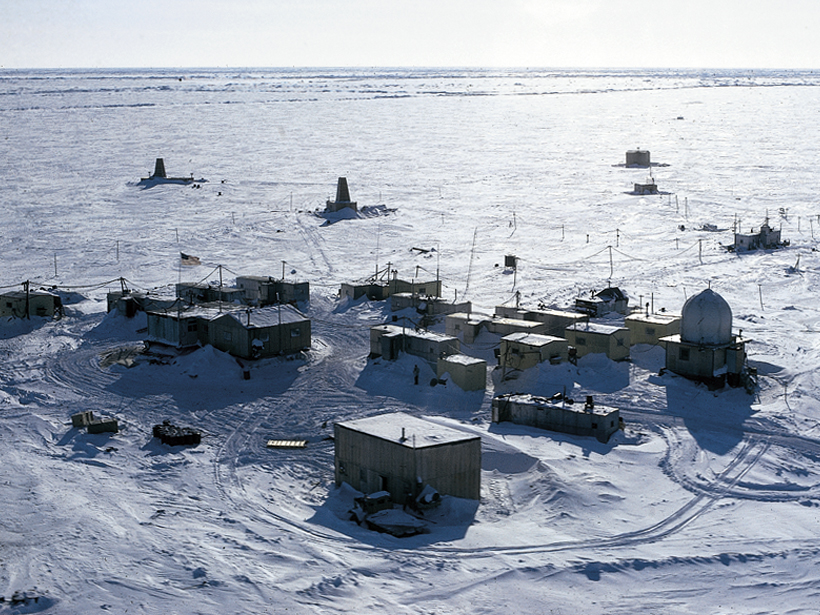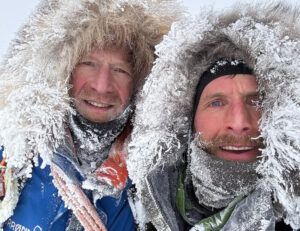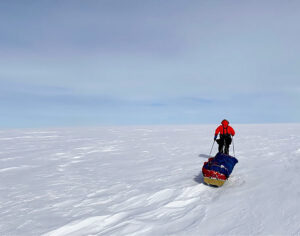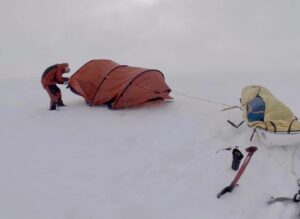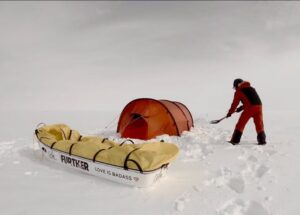In 1970, the world’s northernmost murder took place on the drifting ice island T-3, 350km northwest of Ellesmere Island, on the Arctic Ocean.
Ice islands were big, flat pans of ice that broke off from the 3,000-year-old ice shelves that until recently, clung to parts of northern Ellesmere. They’ve almost all disappeared now — broken away, melted — but they used to be important platforms for research. Unlike sea ice, these giant platforms lasted for a couple of decades. They were so big you could land large supply planes on them.
The first one was discovered in 1946 off Alaska by a U.S. spy plane. It was classified top-secret because of its value as a base. They all came from Ellesmere Island but they could drift thousands of kilometers. Eventually, they broke up.

The Ward Hunt Ice Shelf, above, has disappeared now but it was one of the sources of ice islands. Photo: Jerry Kobalenko
Since 1952, researchers under the U.S. Air Force had occupied T-3 — sometimes called Fletcher’s Ice Island after the pilot who discovered it — almost continuously. At first, it was 52km across and 60m thick, but by the time of the murder, it had shrunk to 11km long, 6.5km wide and 30m thick.
Researchers lived in trailers and communicated with the outside world via high-frequency radio. Planes could not land on the uneven, watery summer ice, and T-3 was well beyond the range of helicopters, so the 19 men were on their own for months.
Hard-drinking misfits
In that era, such isolated outposts drew a lot of hard-drinking misfits. “Porky” Leavitt was one of them. He had already attacked three people in the camp in his quest for alcohol.
On July 16, 1970, Mario Escamilla heard that Porky had just gone into his trailer and stolen some homemade raisin wine. The doors to individual trailers did not lock on the ice island. Escamilla had been attacked by Porky before, so he brought along one of the camp rifles for protection.
He found Porky next door with the station manager, Bennie Lightsy, drinking raisin wine spiked with pure ethanol. Escamilla told Porky to stay away from his wine and went back to his trailer.
Presently, he heard footsteps. Thinking it was Porky and fearing for his safety, he picked up the gun and flipped the safety off. Bennie Lightsy entered, so thoroughly drunk that his blood alcohol was later gauged to be around .26 — at least 12 drinks for an average-sized man.
The two argued about the wine. Escamilla ordered Lightsy to get out of his trailer and continued to brandish the rifle as the argument heated up. The gun went off accidentally, wounding Lightsy fatally. He died soon afterward.
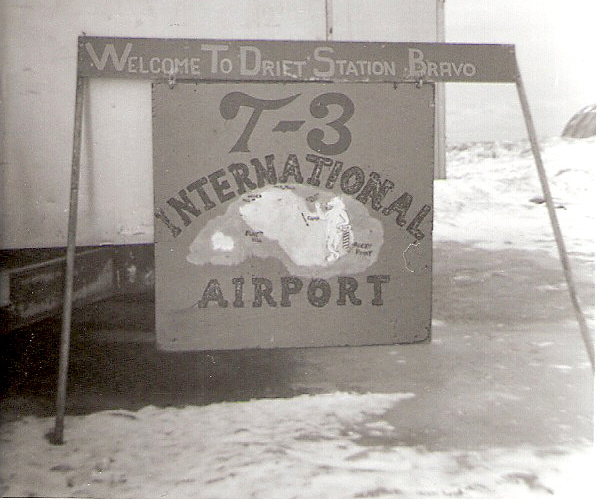
T-3. Photo: Wikimedia Commons
Murder in legal limbo
Legally, T-3 was an awkward spot for a homicide. An ice island was neither land nor ship. It did not belong to anyone. T-3 originated in Canada, but it was a U.S. station manned by Americans. Although maintained by the Air Force, its civilian personnel were not subject to military law.
Ice islands simply did not exist in international law. Lightsy’s death had occurred in one of those rare jurisdictional gaps where serious crimes might go untried. Murder in Legal Limbo, declared the headline in Time magazine.
Ultimately, Escamilla was tried as if it had taken place on the high seas. In 1971, he was found not guilty of second-degree murder but guilty of involuntary manslaughter. He was sentenced to three years, but his appeal turned up enough procedural flaws to win a new trial. In the retrial, Escamilla was acquitted.
The ice island itself melted away in 1984.
